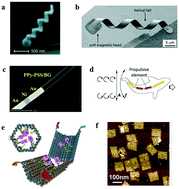Environmental and health risks of nanorobots: an early review
Abstract
Nanorobots for biomedical applications have experienced extensive research and rapid development during the last decade, up to a point where they can now deliver cargos to designated sites in organisms under laboratory conditions. Despite this development, research into nanorobot risks and discussions about potential regulation of nanorobots have so far been limited. This early review of risks related to nanorobots first provides a brief overview of the current state of the technology. The overview outlines three main types of nanorobots: helices, nanorods and DNA nanorobots. Several different designs exist for each of these categories. Second, early indications of potential hazards are reviewed and discussed. Two potential hazards are highlighted: (i) the use of hazardous materials and UV light in nanorobots, and (ii) the loss of propulsion/targeting control. Third, how current regulations are adapted to nanorobots is discussed. Current regulations for medical devices are clearly not adapted to nanorobots and it is even unclear which specific regulations might be applicable. In order to make the most of the use of nanorobots, we recommend they should be subject to broad, risk-related studies as well as dialogues with stakeholders and the public about the definition, purpose and controllability of nanorobot applications. A list of ten priority questions to be addressed in future risk-related studies of nanorobots is provided.



 Please wait while we load your content...
Please wait while we load your content...